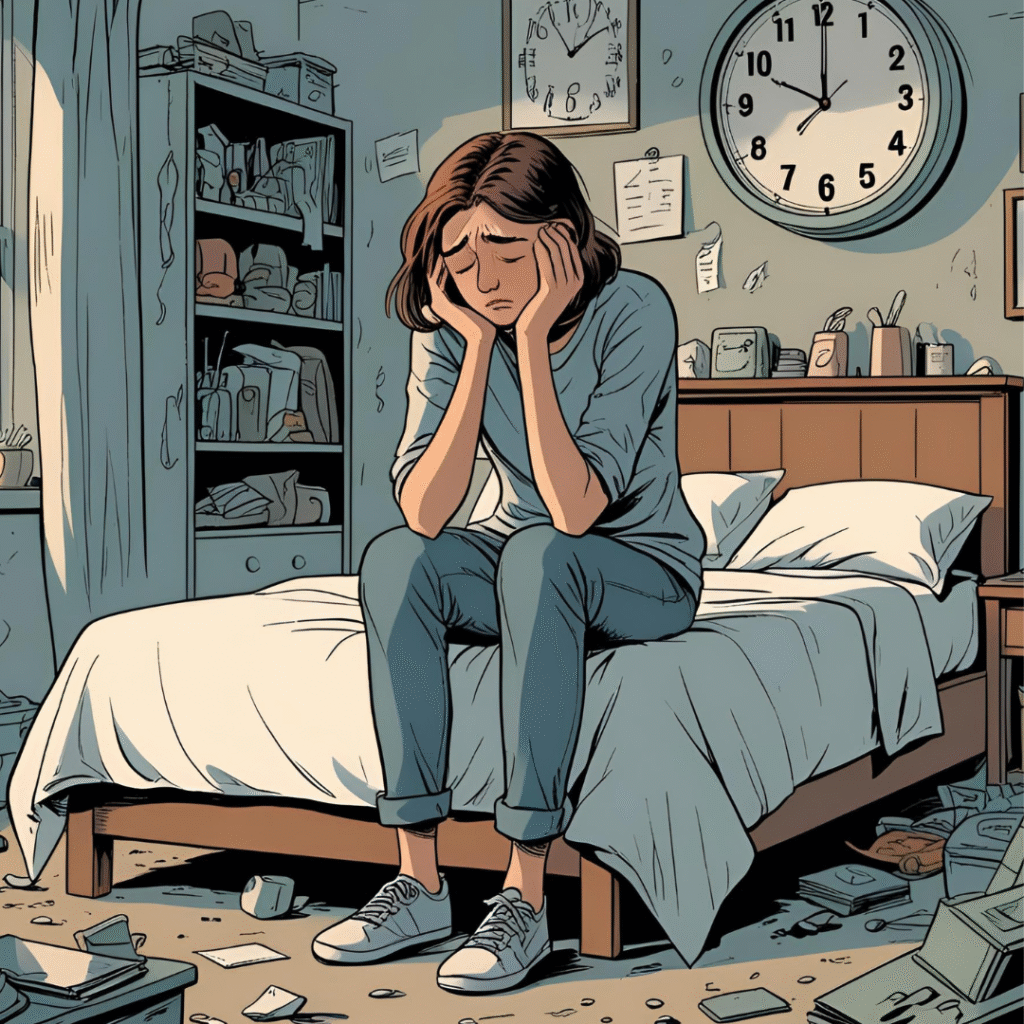What Is Non-24-Hour Sleep-Wake Disorder?
Non-24-Hour Sleep-Wake Disorder is a circadian rhythm sleep disorder where an individual’s internal body clock (circadian rhythm) runs longer than 24 hours. As a result, sleep times gradually drift later each day, cycling completely around the clock over weeks or months.
Key facts:
- Non-24 affects about 50-70% of totally blind individuals (Lockley et al., 2007).
- It’s rare among sighted individuals but does occur.
- The disorder can lead to significant insomnia, daytime sleepiness, and social or occupational impairment.
How the Circadian Clock Works
Our bodies have an internal clock located in the brain’s suprachiasmatic nucleus (SCN), which helps regulate:
- Sleep and wake times
- Hormone production (e.g., melatonin)
- Body temperature
- Metabolic processes
Light exposure is the primary cue (zeitgeber) that resets this clock each day, keeping our rhythms aligned with the 24-hour day.
Causes of Non-24-Hour Sleep-Wake Disorder
Non-24 develops when the circadian clock cannot properly synchronize to external light-dark cycles. Key causes include:
In Blind Individuals
- Lack of light perception due to absence of functional photoreceptors in the eyes.
- Without light input, the body’s natural rhythm — usually slightly longer than 24 hours — free-runs unchecked.
In Sighted Individuals
- Circadian rhythm disorders may arise from:
- Genetic predisposition
- Neurochemical imbalances in the brain
- Mental health conditions like anxiety or depression
- Irregular lifestyle schedules (e.g., shift work)
For sighted individuals, Non-24 is extremely rare and remains poorly understood.
Symptoms and Impact on Daily Life
People with Non-24 often experience:
- Difficulty falling asleep at conventional times
- Nighttime insomnia
- Excessive daytime sleepiness
- Periods of normal sleep alternating with weeks of misaligned sleep
- Mood disturbances, anxiety, or depression due to social isolation
These symptoms can severely disrupt:
- Employment
- School attendance
- Relationships
- Daily functioning
Non-24 in Blind vs. Sighted Individuals
Blind Individuals
- More common in those who are totally blind and lack light perception.
- Symptoms are often overlooked or attributed to blindness itself rather than a sleep disorder.
Sighted Individuals
- Extremely rare.
- Often misdiagnosed as insomnia, delayed sleep phase disorder, or psychiatric conditions.
- Requires careful sleep tracking for diagnosis.
Diagnosis of Non-24-Hour Sleep-Wake Disorder
Diagnosis involves:
- Sleep Diaries: Keeping detailed logs of sleep times over 2-4 weeks.
- Actigraphy: Wearable devices that record activity and light exposure.
- Melatonin Testing: Measuring timing of melatonin release to track circadian phase.
Criteria for diagnosis include a progressive drift of sleep times without a stable 24-hour sleep-wake pattern.
Treatment and Management
There is no universal cure for Non-24, but treatment aims to help individuals align their internal clocks with the external world.
Light Therapy
- Morning bright light exposure for sighted individuals may help reset rhythms.
- Ineffective in blind individuals without light perception.
Melatonin or Melatonin Agonists
- Taken at precise times to shift circadian rhythms.
- Tasimelteon (Hetlioz®) is FDA-approved for Non-24 in blind individuals.
Behavioral Strategies
- Maintaining strict sleep-wake schedules.
- Avoiding naps that worsen daytime sleepiness.
- Managing social and occupational commitments flexibly.
Treatment is highly individualized and often requires trial and error.
Living with Non-24-Hour Sleep-Wake Disorder
For many, Non-24 is a lifelong condition. Helpful strategies include:
- Educating family, employers, and friends about the disorder.
- Planning activities around periods of wakefulness.
- Exploring accommodations in work or school settings.
- Seeking support groups for people with circadian rhythm disorders.
Maintaining mental health is critical, as chronic sleep disruption can cause frustration, isolation, and depression.













